
© 2010-2022 by Fine Arts of the Southwest, Inc. All rights reserved.
Unauthorized reproduction or use is strictly prohibited by law.
A unique historic Hopi polychrome pottery jar
in the style of an ancient Grecian Urn by Nampeyo and/or one of her daughters, c. 1915-1920
This interesting Hopi version of an ancient Greek vase was made 7,000 miles to the west of Greece, but someone must have showed the potter a photo or a drawing such as seen below as a visual reference point. It’s very likely that this piece was commissioned as a special order by one of the prominent Hopi Indian traders of the time, Thomas Polacca, J.L. Hubbell or Thomas Varker Keam for sale to a non-native tourist. This Hopi “Grecian Urn” jar or vase is a very beautifully formed, very beautifully polished and very beautifully painted vessel made around 1915-1920 by one or more members of the Nampeyo family; possibly Nampeyo (1858-1942) herself possibly with the assistance of her middle daughter Nellie Nampeyo (1896-1978) or her youngest daughter Fannie Polacca Nampeyo (1900-1986).
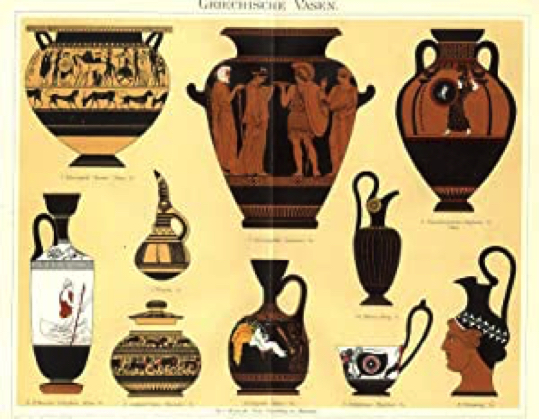
An 1894 original German Chromolithograph of Ancient Greek vases.
Photo source and © AbeBooks
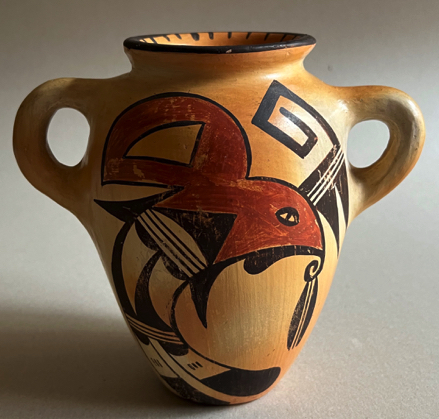
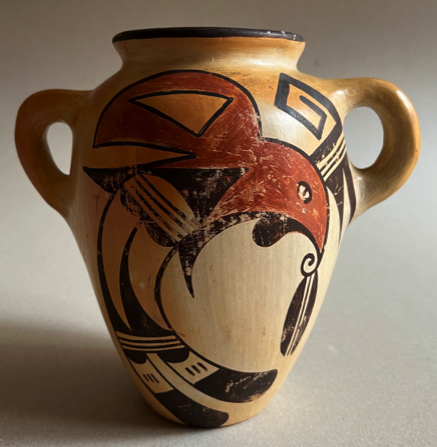
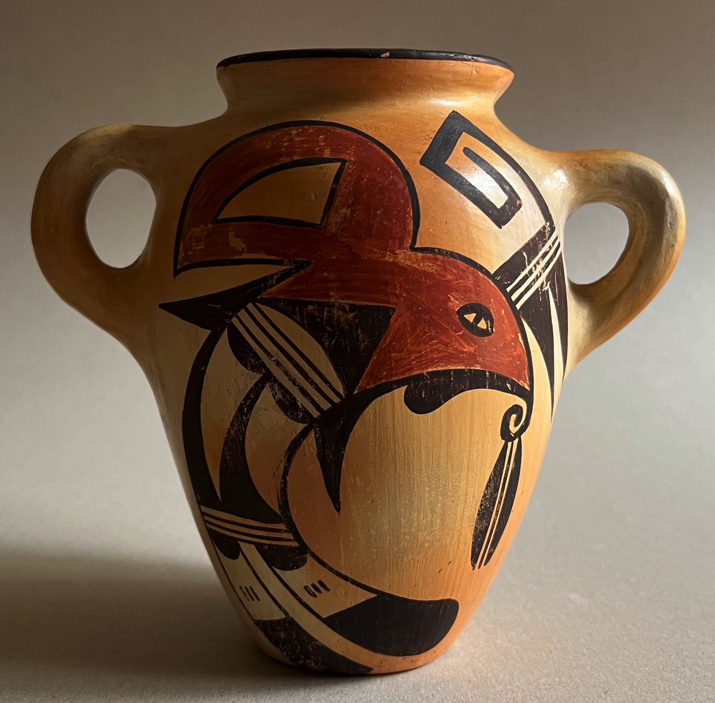
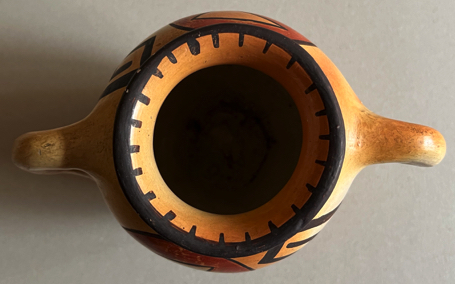
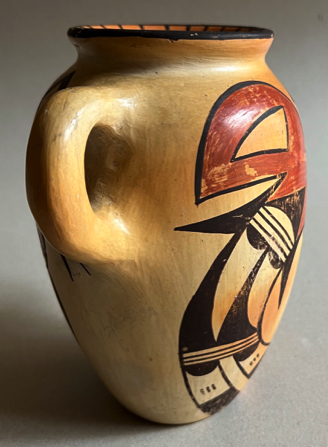
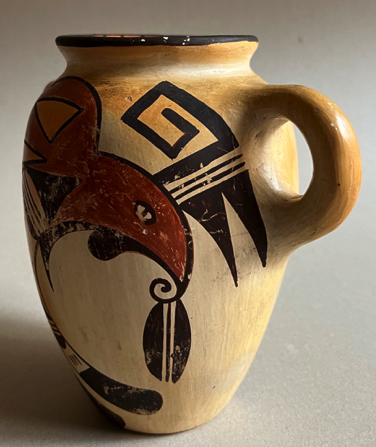
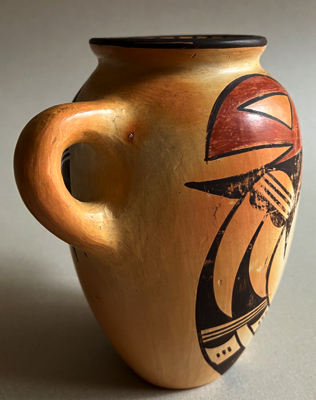
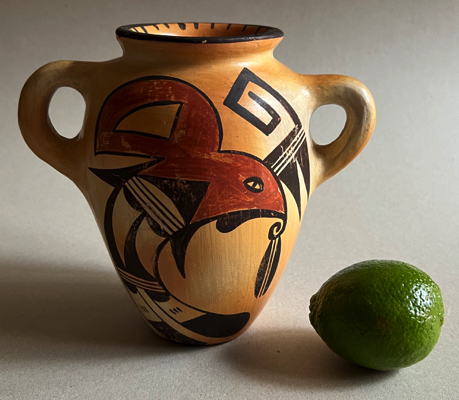
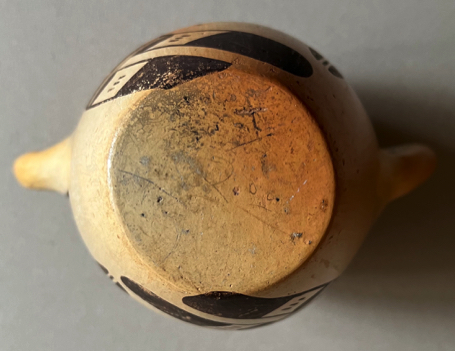
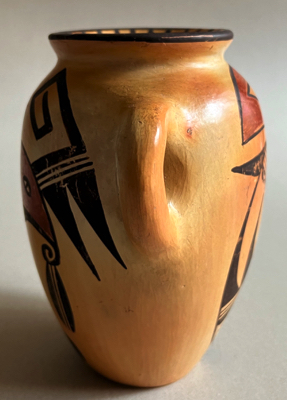
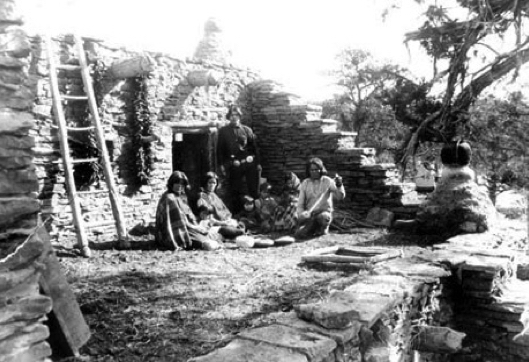
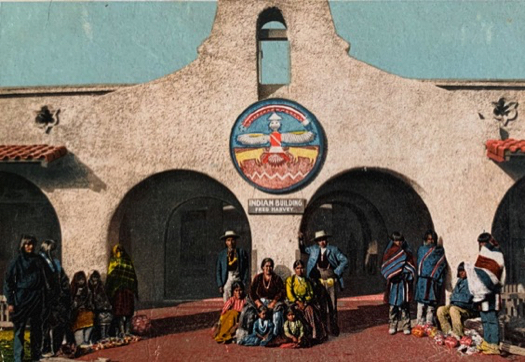
The jar/vase measures 6 1/2” in height and is 7 1/4” in width at its widest point. It is in very fine original condition overall with no cracks and no significant chips. Examination of the jar under Ultraviolet light reveals no evidence at all of any restoration or overpainting, but there is some amount of abrasion wear to one side of the painted design. This could be fairly easily restored by a professional pottery restorer if ever desired, but we will leave that decision to the jar’s next lucky owner. The jar displays just beautifully with its better “A” side on view. The “A” side of the design has a very small amount of abrasion as well, but it is extremely slight and not visually intrusive in our opinion.
The jar, interestingly, has an old pencilled price of $2.00 written on the bottom in the fashion often done by old Indian trading companies. This most likely is the original c.1915-20 price. This was a fairly impressive sum to spend
for a souvenir to take back home from one’s Southwestern visit given that $2.00 in 1915 could purchase ten dozen eggs, sixteen pounds of pork chops or 200 pounds of potatoes or, of course, this fine pottery jar.
This Grecian urn with a Hopi twist is a beautiful and most interesting vessel made by a renowned family of pottery-makers and coming from a unique point in the history of the American Southwest; an interesting
and unusual combination of ancient Greek and Ancient Hopi ceramic traditions, an extremely satisfying piece
both visually and contextually.
Price $1,450
It is also possible that the vessel was made and painted entirely by one of these two daughters. The fairly bold style of painting would seem to suggest the hand of Fannie, but the exquisite vessel formation and exceptional stone polishing and ultra-high temperature coal firing seem to us indicative of the hand of Nampeyo herself so perhaps Nampeyo made the vessel and Fannie painted it. The design itself is a striking modern-day interpretation and “revival” of the ancient Hopi Sikyatki Period (1375-1625 a.d.) “Man-Eiagle” design identified as such by Smithsonian archaeologist, Jesse Walter Fewkes (1850-1930) on a Sikytaki-type ceramic bowl he excavated in the Sikyatki Village ruin in 1895. The painted design is very powerfully done filling up all the available space on the vessel and thus visually stretching it to appear even larger than it is.
At left, Nampeyo and her family at the Fred Harvey Company's Hopi House on the South Rim of the Grand Canyon, c. 1905. At right, the
Fred Harvey Company's Indian Building at the Hotel Alvarado in Albuquerque, NM. This vase could have been sold at either of these places.
Left photo source and © grcahistory. Right photo source and © The Fred Harvey Company
Nampeyo and Fannie, c. 1920
Photo source and © Frashers Fotos